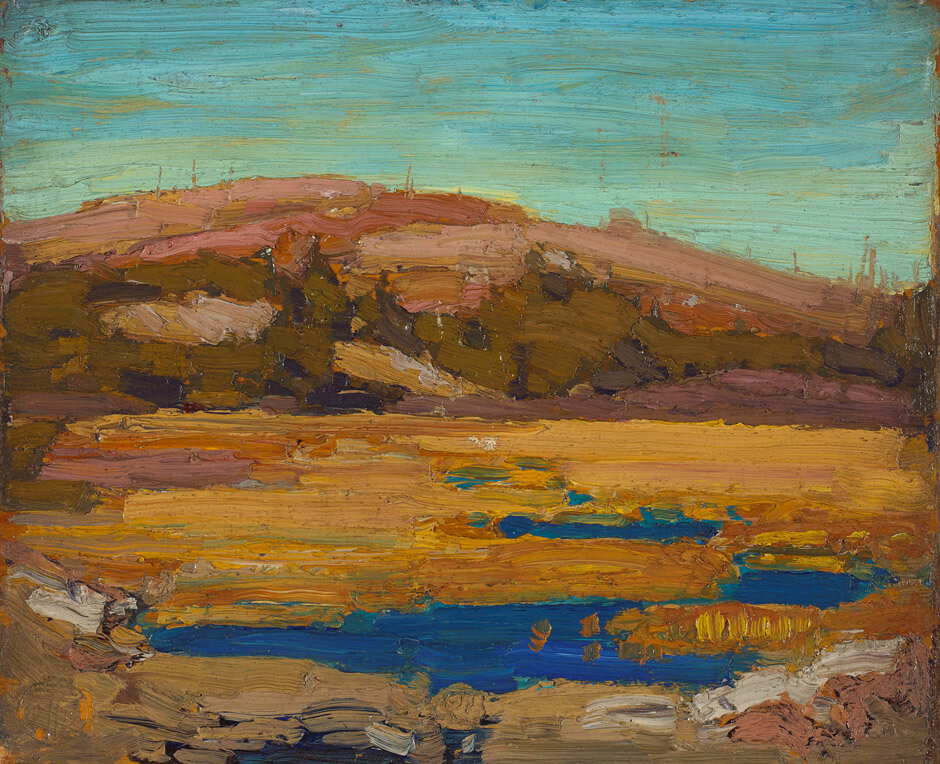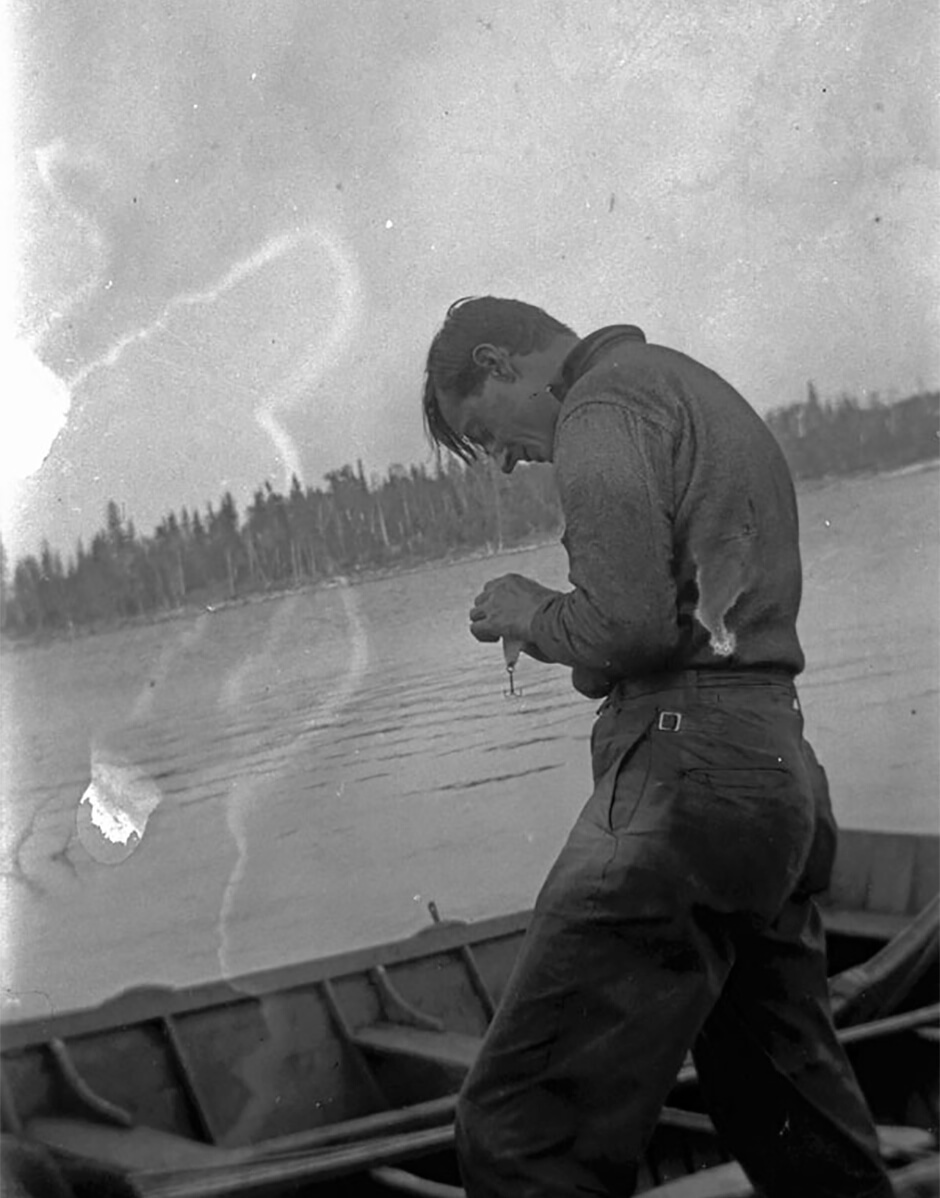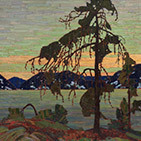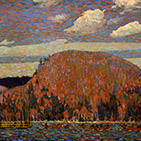Cranberry Marsh 1916

Tom Thomson, Cranberry Marsh, 1916
Oil on wood panel, 21.9 x 27 cm
National Gallery of Canada, Ottawa
Like many of the oil sketches of 1916, Cranberry Marsh demonstrates a shift in Thomson’s manner of expression. This change had been emerging for some months and became pronounced after his early spring trip to the Cauchon Lake with Lawren Harris (1885–1970) and Dr. James MacCallum. Thomson’s artistic path was not always straight, but any consideration of his four hundred or more varied and energetic sketches as a group invites us to trace certain trends in his oeuvre. The normal landscape conventions begin to fade, his hues become more vibrant, and his compositions, while still recognizable as subjects, become battlefields for layers of close-hued or clashing paint.

Cranberry Marsh, as a subject, is hardly dramatic: a swamp with a low round hill behind it, basking in a hot early-summer sun. Yet Thomson transforms it into a scintillating portrait of bright light and keen perception. The horizontal emphasis is strong and powerful; the gentle mound of the hill, which defines the arc of the sky, and the slight curl of the foreground are the only exceptions.
What really jolts the viewer, however, is the central glowing field of the marsh itself: the bright golden yellows, the tangerine oranges, and the scattered threads of alizarin crimson are like a carpet of sunshine or the hottest coals of a forge. Piercing this broad, flat area are the dazzlingly intense small pools of lapis lazuli with some teal green, a deep contrasting colour that changes the palette of the painting like an abrupt change of tempo in music.
Here Thomson was starting to move away from the subject of the painting and to travel toward abstraction. He was already years ahead of his circle of friends. Harris, Franklin Carmichael (1890–1945), and others close to the Group of Seven approached abstraction years later, when they finally realized that painting could be more than illustration and that the creation of an image might convey an emotional state or an aesthetic sensation. Cranberry Marsh, like After the Storm, 1917, is a step in the direction of abstraction—a step toward an end that Thomson never got the opportunity to explore.

 About the Author
About the Author
 More Online Art Books
More Online Art Books
 Acknowledgements
Acknowledgements